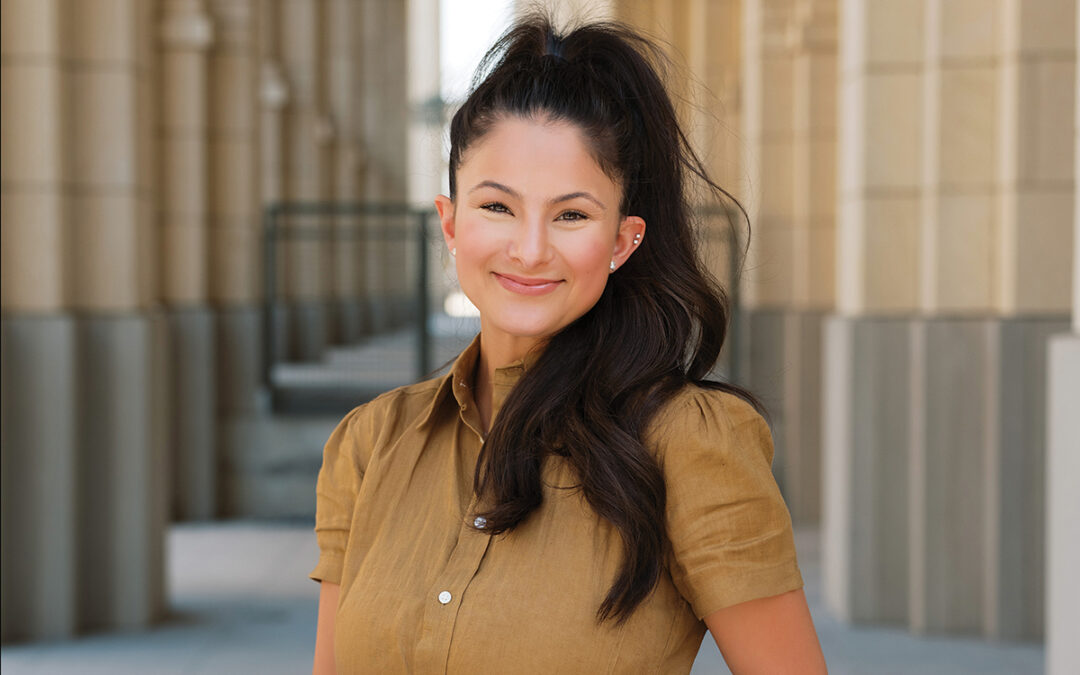On a hot, sunny Saturday morning, Valerie Hendricks is at work —outside in a residential neighborhood near Palo Alto College, shuttling between two home sites, one nearly complete and one still at the framing stage. Like most houses in the immediate area, these two new ones are being built under the auspices of Habitat for Humanity, for which Hendricks works as a house leader. Her work wardrobe includes a baseball cap, a T-shirt with sleeves rolled up to the shoulders and a pair of khaki shorts. At one of the two projects she’s currently responsible for, she’s going over a finish-out list with the homeowner-to-be, a single mother with three children. On the adjacent site, Hendricks directs arriving volunteers to join a team that will help to put in a ceiling. As house leader, Hendricks will be working with as many as 30 volunteers, “showing them what to do, teaching those who have never built anything before how to use tools.” At both sites, she’ll be instructing volunteers in proper safety procedures and checking their work to make sure everything is done correctly.
If all goes well, the day might end with what Hendricks calls “my favorite part of the job: the final walk-through where we make sure everything is finished, and I get to say, ‘Congratulations! You’re a homeowner.’ That’s when you see that smile on their faces, after they’ve done so much work to get there.” Habitat homeowners, she explains, are heads of low-income families who put in 300 hours of “sweat equity” on their own houses and those of future neighbors. This route to home ownership is “a hand up, not a handout,” she says, a perspective she and other Habitat staff members communicate to volunteers from corporations, churches and other organizations who find themselves working alongside future Habitat homeowners, typically young single women. For many of the families Hendricks meets through her work, Habitat — a nonprofit organization in San Antonio since 1976 — represents a chance for a fresh start. What most of them don’t know is Habitat also was a new beginning for this cheerful, competent staff member. Hendricks’ road to professional satisfaction wasn’t a straight shot to construction or even the nonprofit sector. A couple of semesters at San Antonio College didn’t point her toward any specific field of interest, so she tried a year as a volunteer with AmeriCorps, a national service program often referred to as “the domestic Peace Corps.” She was sent to St. Louis, where she hoped to get a volunteer placement in a school but instead was assigned to an emergency-response team. “This was in 2002, and our first call was to help after Hurricane Lili in Louisiana,” Hendricks remembers. A self-described “high-maintenance girly girl” who had worked at Bath and Body Works through high school and college, Hendricks wasn’t sure AmeriCorps would be right for her. “I wasn’t the type to get my hands dirty,” she says.
After a week of helping deliver services to residents affected by the storm, though, suddenly living out of a Fruit of the Loom factory parking lot “just felt right.” For the rest of that year, Hendricks helped fight forest fires, aided in recovery efforts after the space shuttle explosion and responded to other natural disasters. While she didn’t think a career in emergency response was for her, she wanted a life of service. Inspired by her older sisters, both teachers, she decided to return to San Antonio, where she enrolled at Our Lady of the Lake University to major in early childhood education. After a semester, though, the classroom didn’t seem to be the right place for her either, and she decided to move into culinary studies at St. Philip’s College. “I had always loved cooking,” she says, “but I found out I didn’t have what it takes to become a line cook or a chef. I wanted to enjoy working with food, but not with all the hustle and bustle (of a professional kitchen).” Hoping to discover some new area of interest, Hendricks signed up for another volunteer stint with AmeriCorps. This time, she stayed in San Antonio and went to work for Habitat for Humanity. “I thought it would be office work,” she says. “When I found out I’d be working in construction, I wanted to ask for a different placement. After a (previous AmeriCorps) year out in the woods, I didn’t think I wanted to do any more manual labor.” Her Habitat supervisor asked her to try it “just for a week,” and at the end of the trial period, she was so exhilarated by what she was doing — “hammering and sawing, watching houses go up and knowing I was a part of that” — that she was ready to commit to staying.
When the volunteer period at Habitat was over, she let her supervisor know she would like to come back if a staff position became available. Within a few months, a part-time position as a house leader opened up, and Hendricks divided her time between Habitat and Bath and Body Works. “I met my husband then,” she says, laughing, “when I was looking cute and all dolled up” for her role as a retail manager. Eventually, Hendricks was offered a full-time position with Habitat, and as she looks around the Palo Alto neighborhood where she works, she estimates that there are only a few houses she hasn’t had a hand in since the development began in 2005. Her construction skills have developed to the point where, she says, “I can build a whole house, except for the plumbing and electrical work.” Habitat in San Antonio has two other female house leaders, though they don’t often work together. Once in a while, volunteers — “usually older men” — might seem skeptical about Hendricks’ credibility as a construction worker, but “when I show I know what I’m talking about, they accept that I know what I’m doing.”
At home with her husband, a police officer, she tackles most of the home-repair chores, except those involving plumbing. “I’ll say, ‘I got this,’ and he’s fine with that,” she says. “He’s a good sport.”
After years of trying different jobs and moving on, Hendricks has found her niche. “I can see myself doing this for a long time,” she says. If she and her husband start a family in the next few years, there might be times she wouldn’t be able to scramble up ladders to check on roof shingles, but she hopes she could continue with Habitat, perhaps working with prospective homeowners in the office, where they take classes in home maintenance and the financial aspects of home ownership.
She and her husband, who married earlier this year, have yet to buy a home of their own, but as she says, “I understand the value of owning your own home.”
When Hendricks works with volunteers and future Habitat homeowners, she says, “I love it when (the volunteers) see how hard our families work to be here. I can tell on their faces when they start to get it.” After a house is finished and a family moves in, she says, many of the neighbors already know each other. “They are very protective of each other, and they help each other out,” says Hendricks. “What we do here is not just building houses; we’re building community.”
For information about volunteering with Habitat for Humanity of San Antonio, call (210) 223-5203 or visit www.habitatsa.org.









0 Comments